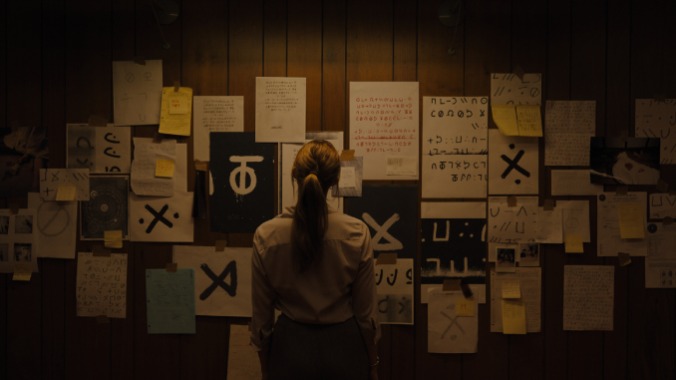Longlegs Immerses You in Evil and an Unforgettable Nicolas Cage

The first thing I wanted to do after seeing Longlegs is take a shower. Some horror movies have you looking over your shoulder on the way out of the theater, jumping at shadows in the parking lot. These are the horror movies that follow you. Longlegs doesn’t follow you. You’re drenched in Longlegs. It’s all over you—in your hair, on your clothes—by the time the credits roll. Its fear is less tangible than a slasher or a monster, even less than a demon. It’s just something in the air, in the back of your mind, like the buzz of a fluorescent lamp. Oz Perkins’ Satanic serial killer hunt is his most accessible movie yet, putting the filmmaker’s lingering, atmospheric power towards a logline The Silence of the Lambs made conventional. Precisely crafted and just odd enough to disarm you, allowing its evil to fully seep in, Longlegs is a riveting tale of influence and immersion.
We’re the first to fall under its spell, as Perkins drowns us in unyielding walls of color (bright red titles, snow-white landscapes) and confines us to the past’s boxy aspect ratio. A playfully scary vignette plays out, a stiff apéritif for us to roll around on our tongue as the screen expands into the rectangular present of the film’s ‘90s. There, FBI agent Lee Harker (Maika Monroe) is next to succumb.
After Lee successfully, and mysteriously, locates a killer on little more than a hunch, her charming boss, Agent Carter (Blair Underwood), assigns the quiet savant to a long-dormant investigation into a suspect known only by how he signs the coded letters found at the crime scenes: Longlegs (Nicolas Cage). Someone has been killing nice families with nice daughters in nice white houses—or somehow making them kill each other—for decades. Cutting through the numerology, inverted crosses and other occult ephemera that have been deteriorating since the Manson ‘60s might save the next targets.
-

-

-

-

-

-

-

-

-

-

-

-

-

-

-

-

-

-

-

-

-

-

-

-

-

-

-

-

-

-

-

-

-

-

-

-

-

-

-

-








































